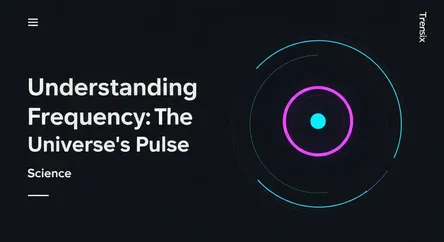Science
Understanding Frequency: The Universe's Pulse

Explore frequency, the measure of wave oscillations per second. Learn how this fundamental concept defines everything from light and sound to the cosmos.
What is it?
Frequency is the number of occurrences of a repeating event per unit of time. In physics, it most often refers to the rate at which a wave, like light or sound, oscillates. Measured in Hertz (Hz), where 1 Hz equals one cycle per second, frequency is a fundamental property of the universe. It is inversely related to wavelength; the higher the frequency, the shorter the wavelength. From the slow oscillations of ocean waves to the incredibly rapid vibrations of gamma rays, every wave phenomenon is characterized by its unique frequency, dictating its energy and properties.
Why is it trending?
Frequency is a key concept in groundbreaking cosmic discoveries. Telescopes like the James Webb Space Telescope analyze the frequency of light from distant galaxies to understand their composition, age, and distance. It's also at the heart of modern technology, from 5G communication networks that use higher frequencies for faster data transfer to quantum computing, where manipulating the frequency of subatomic particles is essential. Discussions around gravitational waves—ripples in spacetime—also revolve around detecting their incredibly low frequencies, opening a new window to the universe.
How does it affect people?
Frequency profoundly impacts our daily lives and perception of reality. The frequency of light waves determines the colors we see, while the frequency of sound waves dictates the pitch we hear. Our technologies are built upon it; radio, Wi-Fi, and smartphones all operate by transmitting and receiving information on specific frequency bands. In medicine, technologies like ultrasound and MRI use sound and radio frequencies to create images of the human body. Understanding frequency is not just academic; it's the basis for how we communicate, perceive, and interact with the world and the cosmos.